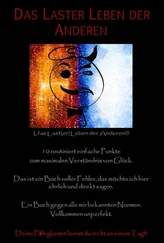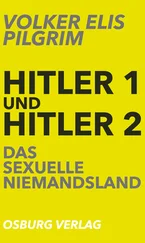Though their concepts could be tested temporarily in maneuvers, these divisions were impossible to create under the original provisions of Versailles. The initial direct impulses for motorization and mechanization instead came from a source no one would have been likely to predict. The Versailles Treaty allocated each infantry division a Kraftfahrabteilung, or motor battalion. As this organization developed it was not the orthodox supply formation most probably envisaged by the Allied officials who structured the Reichswehr, but rather a general pool of motor transport. The hundred-odd men of a motor company had access to two dozen heavy trucks and eleven smaller ones, six passenger cars, four buses, seventeen motorcycles, and two tractors. Treaty interpretation even allowed each battalion a complement of five wheeled armored personnel carriers. These Gepanzerter Mannschaftstransportwagen resembled those used by the civil police, without the twin machine-gun turrets, and could carry a rifle squad apiece. With that kind of vehicle pool on call, it was a small wonder that as early as 1924, units conducted on their own small-scale experiments with organizing motorcycle formations, and provided dummy tanks for maneuvers. The motor battalions were also responsible for the Reichswehr’s antitank training—a logical assignment since they controlled the only vehicles able to provide hands-on instruction.
The motor transport battalions’ practical support for operational motorization was not necessarily a straw in the Reichswehr’s institutional wind. A front-loaded, offensively minded Prussian/German army had traditionally regarded logistics as unworthy of a real soldier’s attention. Under the Kaiser, train battalions had been a dumping ground and a dead end for the dipsomaniac, the scandal-ridden, the lazy, and the plain stupid—the last stage before court-martial or dismissal.
That heritage probably had something to do with the assignment in 1922 of one Lieutenant Heinz Guderian to a staff post in the 7th Kraftfahrabteilung in Munich. Guderian had a good enough war record as a signals and intelligence officer to be assigned as the army’s official representative to the Iron Division in the Baltic. But instead of strengthening General Staff control of that unruly formation, he supported its de facto mutiny in the fall of 1919. Initially transferred to command an infantry company, a punitive measure common for General Staff officers with blotted copybooks, Guderian’s superiors described his new assignment as a positive career move that would improve his professional breadth. Guderian saw it as a further demotion. But given the highly limited opportunities for ex-lieutenants in the civilian economy of 1919 Germany, Guderian finally decided to report to the 7th after all.
His commanding officer was Lieutenant Colonel Oswald Lutz. Lutz had begun his career in the railway troops, then, during the war, shifted to motor transport, eventually becoming its chief for the 6th Army. An enthusiastic supporter of tank development, Lutz had also considered wider aspects of motorization. Serving in the postwar Truppenamt—successor to the forbidden General Staff—in the Weapons Office and then the Inspectorate of Motor Troops, he spearheaded a reconceptu alization of the Reichswehr’s approach to the use of motor vehicles in general and tanks in particular. He insisted on expanding the initial emphasis on technology to include the study of tactics. Lutz also pestered civilian designers to develop prototype specialized vehicles, the artillery tractors and the half-tracks, with front wheels for steering and caterpillar tracks in the rear for cross-country mobility, that some of his officers were considering as complements to specialized fighting vehicles.
Again, this process was facilitated by circumstances. Guderian’s story of the senior officer who told him trucks were there to haul flour ( “ Mehl sollt ihr fahren!”) is almost certainly apocryphal. As the Reichswehr settled into its peacetime stations its vehicles were, however, likely to be underemployed. During the war, shortages of gasoline and rubber had increasingly restricted the use of trucks even for basic supply purposes. A century earlier, advocates of railroads had depicted a Germany made invulnerable by troops shuttled behind steam engines. Now a new potential form of strategic/operational mobility was attracting notice. The Reich’s steadily improving road system had even the state railway service investing in buses to supplement its locomotives. Even conservative officers saw the prospects—and career advantages—of eventually establishing a transport force that could quickly shift regiments, perhaps even divisions, to threatened sectors and regions.
In the winter of 1923-24, Reichswehr maneuvers incorporated cooperation between motorized ground troops and simulated air forces. In 1925, the 1st Division in East Prussia included armored cars, motorized artillery, and dummy tanks in its maneuver orders of battle. Such exercises highlighted the Reichswehr’s limited achievements in motorization. They also offered opportunities to consider problems as they arose—and foreign observers noted the Germans seemed well able to correct mistakes involving motor vehicles. In 1924, the motor troops were made responsible for monitoring developments in tank war and preparing appropriate training manuals.
Motorization received a further institutional boost when, in 1926, Colonel Alfred von Vollard- Bockelberg took over as branch Inspector General. He expanded and transformed the branch officers’ course from a focus on technical details of maintenance to a program incorporating, and then emphasizing, tactical studies. It would eventually become the Armored Forces School. In 1929, an improvised motorized “reconnaissance and security battalion,” drawn primarily from the 6th Motor Battalion, took the field for maneuvers. In 1930, the 3rd Motor Battalion was completely reorganized as a fighting formation, including mock-up tanks and antitank guns as well as the more orthodox mix of trucks, cars, and motorcycles. By then a new armored personnel carrier was coming on line, based on a four-wheel civilian truck, with a cupola-mounted machine gun enabling it to double as an armored car. And Bockelberg gave the branch a new name. Henceforth it was titled Motorized Combat Troops.
IN JANUARY 1918, as part of the preparation for the great offensive, Ludendorff ’s headquarters issued the Guide for the Employment of Armored Vehicle Assault Units . It described their main mission as supporting the infantry by destroying obstacles, neutralizing fire bases and machine-gun positions, and defeating counterattacks. Because tanks by themselves could not hold ground, the document emphasized the closest possible cooperation with infantry. Tank crews were expected to participate directly in the fighting, either by dismounting and acting as assault troops, or by setting up machine-gun positions to help consolidate gains. In fact the tanks and infantry had, for practical purposes, no opportunity to train together—a problem exacerbated by the continued assignment of tank units to the motor transport service. In action, the tanks’ tendency to seek open ground and easy going clashed fundamentally with the infantry’s doctrine of seeking vulnerable spots. Nothing happened to change the infantry’s collective mind that tanks were most effective against inexperienced or demoralized opponents.
The widespread and successful Allied use of tanks in the war’s final months made a few believers. In the first months after the armistice, before the Republic’s military structure was finally determined, critics suggested the German army had seriously underestimated the tanks’ value. After Versailles made the question moot in practical terms, theoretical interest continued.
Читать дальше

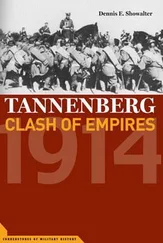
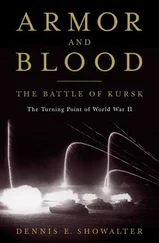

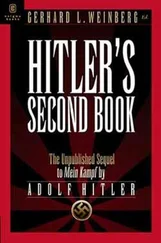


![Traudl Junge - Hitler's Last Secretary - A Firsthand Account of Life with Hitler [aka Until the Final Hour]](/books/416681/traudl-junge-hitler-s-last-secretary-a-firsthand-thumb.webp)
